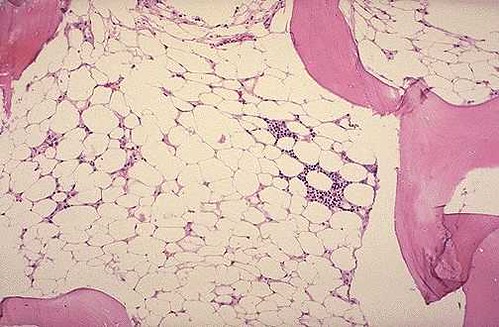What Are Common Early Signs of Aplastic Anemia?

While aplastic anemia can affect individuals of any age, it is more commonly diagnosed in adolescents and young adults and so what are common Early Signs of Aplastic Anemia? This includes Fatigue and Weakness, Easy Bruising and Bleeding, Frequent Infections, Pallor and Shortness of Breath, Irregular Heartbeat, and Excessive Nosebleeds.
Aplastic Anemia is a rare but serious condition that can have a profound impact on your health. Understanding the common Early Signs of Aplastic Anemia is crucial for early detection and timely intervention.
Imagine feeling unusually fatigued, bruising easily, or getting frequent infections without a clear cause. These could be early indicators of aplastic anemia, a condition where your bone marrow fails to produce enough blood cells.
Recognizing these signs early can make a significant difference in your treatment and quality of life.
In this article, we will delve into the common Early Signs of Aplastic Anemia to help you understand what to look out for.
From subtle changes in your energy levels to more noticeable symptoms like prolonged bleeding, we will explore the various ways aplastic anemia can manifest itself.
By the end of this article, you will have a clearer understanding of the signs and symptoms of aplastic anemia and be better equipped to take action if you suspect you or a loved one may be affected.
Let’s dive in and uncover the mysteries of this complex condition.
Overview of Aplastic Anemia
Definition and Types of Aplastic Anemia
Aplastic anemia is broadly defined as a failure of the bone marrow to produce an adequate number of blood cells.
There are two main types of aplastic anemia: acquired and inherited. Acquired aplastic anemia is the most common form and typically occurs due to exposure to environmental factors, certain medications, or infections.
Inherited aplastic anemia, on the other hand, is a genetic condition passed down from parents to their children.
Importance of Early Detection of Aplastic Anemia
Early detection of aplastic anemia is critical for several reasons. Firstly, prompt diagnosis allows for timely intervention and treatment, which can help prevent the progression of the condition and reduce the risk of complications.
Secondly, identifying the early signs of aplastic anemia can help differentiate it from other conditions with similar symptoms, ensuring that individuals receive appropriate care.
Lastly, early detection may improve treatment outcomes and quality of life for individuals living with aplastic anemia.
Causes and Risk Factors Associated with Aplastic Anemia
While the exact cause of aplastic anemia is often unknown, several factors can increase the risk of developing the condition.
Exposure to toxins such as benzene, certain medications like chemotherapy drugs, and infectious agents such as viruses can damage the bone marrow and impair blood cell production.
Other risk factors include autoimmune disorders, radiation therapy, and certain genetic conditions.
Signs and Symptoms of Aplastic Anemia
Fatigue and Weakness: Understanding the Impact on Daily Life
Fatigue and weakness are among the most common symptoms of aplastic anemia and can significantly impact an individual’s daily life.
This fatigue is often due to the decreased number of red blood cells, which are responsible for carrying oxygen to the body’s tissues.
As a result, individuals with aplastic anemia may experience tiredness, lethargy, and a general lack of energy, making it difficult to perform routine tasks or engage in physical activities.
Easy Bruising and Bleeding: Recognizing Unexplained Bruises and Bleeding
Aplastic anemia can lead to a decrease in platelets, which are essential for blood clotting. As a result, individuals with the condition may experience easy bruising, nosebleeds, and prolonged bleeding from minor cuts or injuries.
These symptoms can be alarming and may indicate an underlying problem with blood cell production.
Frequent Infections: How Aplastic Anemia Weakens the Immune System
The decrease in white blood cells associated with aplastic anemia can weaken the immune system, making individuals more susceptible to infections.
Common infections may include respiratory infections, urinary tract infections, and skin infections. These infections can be recurrent or severe and may require medical intervention.
Pallor and Shortness of Breath: Signs of Anemia and Reduced Oxygen Levels
Anemia, a condition characterized by low levels of red blood cells, is a hallmark feature of aplastic anemia.
As a result, individuals with the condition may appear pale or have a “washed-out” complexion due to decreased oxygen delivery to the body’s tissues.
Additionally, reduced oxygen levels can lead to symptoms such as shortness of breath, especially during physical exertion or activities that require increased oxygen consumption.
Rapid or Irregular Heartbeat: Understanding Cardiac Symptoms
In severe cases of aplastic anemia, the heart may need to work harder to compensate for the low levels of oxygen in the blood.
This can result in symptoms such as a rapid or irregular heartbeat, also known as tachycardia or arrhythmia, respectively.
These cardiac symptoms may be accompanied by chest pain, dizziness, or lightheadedness and should prompt immediate medical attention.
Prolonged or Excessive Nosebleeds: A Common Early Sign in Some Cases
In some individuals, aplastic anemia may manifest as prolonged or excessive nosebleeds, even in the absence of other symptoms.
This occurs due to the decreased number of platelets in the blood, which impairs the body’s ability to form blood clots and stop bleeding.
Recurrent or unexplained nosebleeds should be evaluated by a healthcare professional to rule out underlying causes such as aplastic anemia.
Diagnostic Methods for Aplastic Anemia
Blood Tests: Identifying Low Blood Cell Counts
Blood tests are the primary diagnostic tool used to evaluate blood cell counts and identify abnormalities associated with aplastic anemia.
These tests typically include a complete blood count (CBC), which measures the number of red blood cells, white blood cells, and platelets in the blood.
In individuals with aplastic anemia, blood tests may reveal low levels of all three cell types, indicating bone marrow suppression.
Bone Marrow Biopsy: Confirming Aplastic Anemia Diagnosis
A bone marrow biopsy may be performed to confirm a diagnosis of aplastic anemia and assess the health and function of the bone marrow.
During this procedure, a small sample of bone marrow is removed from the hip bone and examined under a microscope for signs of aplasia, or decreased cellularity.
Bone marrow biopsy results can help determine the severity of the condition and guide treatment decisions.

Imaging Tests: Assessing the Severity and Spread of the Condition
Imaging tests such as CT scans or MRI scans may be used to assess the severity of aplastic anemia and evaluate for any underlying causes or complications.
These tests can provide detailed images of the bone marrow, organs, and other tissues, helping healthcare providers determine the extent of bone marrow suppression and plan appropriate treatment strategies.
Treatment Options for Aplastic Anemia
Blood Transfusions: Managing Low Blood Cell Counts
Blood transfusions may be used to replenish low levels of red blood cells, white blood cells, and platelets in individuals with aplastic anemia.
Transfusions can help alleviate symptoms such as fatigue, weakness, and bleeding and improve overall well-being.
However, they are typically used as a temporary measure and may need to be repeated regularly depending on the individual’s condition.
Bone Marrow Transplant: Potential Cure for Aplastic Anemia
A bone marrow transplant, also known as a hematopoietic stem cell transplant, is considered the most effective treatment for severe aplastic anemia.
This procedure involves replacing damaged bone marrow with healthy bone marrow from a compatible donor, typically a sibling or unrelated donor.
Bone marrow transplants can cure aplastic anemia in some cases and restore normal blood cell production.
Medications: Improving Blood Cell Production and Reducing Symptoms
Medications such as immunosuppressants and growth factors may be prescribed to help stimulate the production of blood cells and reduce symptoms of aplastic anemia.
These medications work by suppressing the immune system, promoting bone marrow function, or increasing the number of blood cells in the circulation.
While they may not cure aplastic anemia, they can help improve the quality of life and prevent complications.
Lifestyle and Home Remedies
Dietary Changes: Foods That Can Help Boost Blood Cell Production
Eating a nutritious diet rich in iron, vitamin B12, and folate can help support the production of red blood cells and improve symptoms of aplastic anemia.
Foods such as leafy greens, lean meats, fortified cereals, and citrus fruits are excellent sources of these nutrients and should be included as part of a balanced diet.
Avoiding Infections: Tips to Reduce the Risk of Infections
Practicing good hygiene, avoiding contact with sick individuals, and getting vaccinated can help reduce the risk of infections in individuals with aplastic anemia.
Washing hands regularly, covering coughs and sneezes, and avoiding crowds during flu season are simple yet effective ways to prevent the spread of infectious diseases.
Managing Fatigue: Strategies to Combat Aplastic Anemia-Related Fatigue
Managing fatigue associated with aplastic anemia may involve getting regular exercise, maintaining a healthy sleep schedule, and conserving energy throughout the day.
Engaging in low-impact activities such as walking, swimming, or yoga can help improve stamina and reduce feelings of tiredness.
Additionally, establishing a regular sleep routine and taking short breaks as needed can help prevent overexertion and minimize fatigue.
Complications and Prognosis
Potential Complications of Aplastic Anemia
Complications of aplastic anemia can include bleeding disorders, infections, and an increased risk of developing other blood disorders, such as leukemia.
Severe aplastic anemia can also lead to life-threatening complications such as hemorrhage or sepsis if left untreated.
Prognosis and Life Expectancy: Factors That Influence Outlook
The prognosis for individuals with aplastic anemia varies depending on the severity of the condition and how well it responds to treatment.
With appropriate treatment, many individuals with aplastic anemia can lead normal lives. However, the risk of relapse or complications such as graft-versus-host disease following a bone marrow transplant should be considered when discussing prognosis and life expectancy.
Prevention and Risk Reduction
Avoiding Exposure to Toxins and Chemicals
Avoiding exposure to toxins and chemicals, such as benzene and certain medications, can help reduce the risk of developing aplastic anemia.
Individuals working in industries where they may be exposed to hazardous substances should take precautions to minimize exposure and follow safety guidelines to protect their health.
Genetic Counseling: Understanding the Role of Genetics in Aplastic Anemia
Genetic counseling may be recommended for individuals with a family history of aplastic anemia to understand their risk of inheriting the condition.
Genetic counselors can provide information about the genetic basis of aplastic anemia, discuss available testing options, and offer guidance on family planning and risk reduction strategies.
Research and Future Developments
Current Research and Clinical Trials for Aplastic Anemia
Researchers are continuously studying aplastic anemia to develop new treatments and improve outcomes for individuals with the condition.
Current research focuses on identifying novel therapeutic targets, optimizing treatment regimens, and exploring the potential of emerging therapies such as gene therapy and stem cell transplantation.
Potential Breakthroughs and Treatment Innovations
Emerging therapies, such as gene therapy and stem cell-based treatments, hold promise for the future treatment of aplastic anemia.
These innovative approaches aim to address the underlying causes of the condition and restore normal blood cell production, offering hope for individuals with severe or refractory aplastic anemia.
Conclusion
Recognizing the early signs of aplastic anemia is crucial for timely diagnosis and treatment. If you or someone you know is experiencing symptoms of aplastic anemia, it’s important to seek medical advice promptly.
Early detection can lead to better treatment outcomes and improved quality of life for individuals with this condition. By raising awareness of the early signs and symptoms of aplastic anemia, we can empower individuals to take control of their health and seek the care they need.
With advances in research and treatment, there is hope for a brighter future for those affected by this rare and challenging condition.









